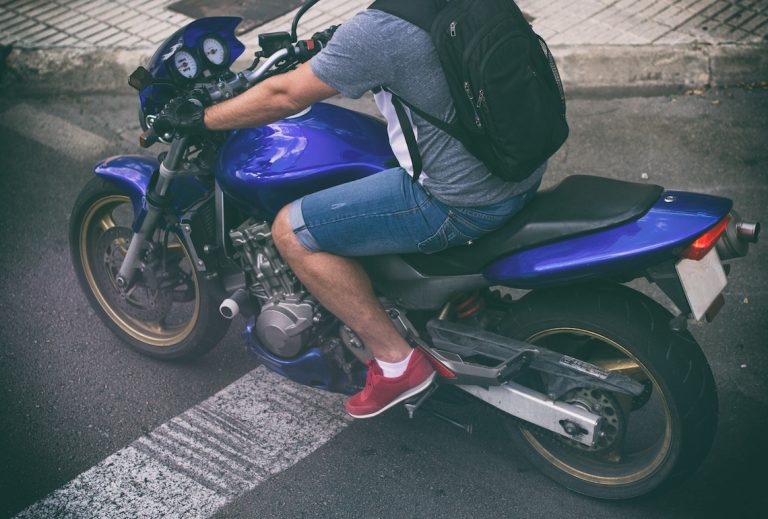Does the law require you to wear all the gear, all the time, and what are the consequences in court if you don’t? ABR’S legal expert Andrew Dalton explains all.
Just how much protective gear should a motorcyclist wear? For the lightweight enduro tourist, weight saving is a big thing. If the terrain is technical and the weather is warm, a thick over suit, big Gore-Tex adventure boots and road gloves are beautifully protective but have a similar thermal effect to that experienced by a boil in the bag meal.
I will limit my analysis to the law of England and Wales. If you are riding in Spain or France for example, their rules as to what is proper riding kit apply, and unless the rider or driver who knocks you off lives in England and Wales, the local laws will govern any arguments as to liability apportionment based on riding kit.
I lay my cards on the table. I am not an ‘all the gear, all the time rider.’ Experience has given me an absolute insistence on riding in boots because I have seen far too many mangled feet doing my job and they are very hard to rebuild. But other than a helmet, a UK rider is not obliged to wear any protective kit. However, The Highway Code and some virtually unknown Department of Transport advice buried somewhere on the internet give some pointers.
The Highway Code says ‘strong boots, gloves, and suitable clothing may help protect you if you are involved in a collision’ but, as a matter of law, there is no duty upon you to wear safety kit and, if the collision caused you injury, a failure to wear all the kit is very unlikely to have any impact on damages. I have been practising in the field of motorcycle injury work almost exclusively for 25 years and I have never heard a serious argument that the rider’s injuries were worsened by his kit, unbuckled helmets excepted.
As a matter of English law, failure to comply with The Highway Code can and does influence judges. The Highway Code says you should wear a light or brightly coloured helmet, but this argument is frankly never deployed in court because a bike is not invisible. If you look, you see a motorcyclist whether they are wearing a black helmet, a white helmet, or a fluorescent helmet.
So, all the gear, all of the time? It is up to you. We all have our risk levels. If you choose to use a statistically dangerous form of transport, where a moment’s carelessness from another road user can cost you your life or your spinal cord, then the chances are you are already at the less-risk-averse end of the human population. My collection of fractures all occurred while wearing all the gear. There is a school of thought which says that protective gear gives you an unjustified sense of security and, if I were to ride in flip flops and shorts, I suspect I would be so slow and cautious I’d make better progress walking.
I am careful not to presume my particular experience is conclusive, but I do have a peculiar and particular viewpoint. My absolute minimum level of kit is boots, gloves and helmet, but I can count on the fingers of a boxing glove the amount of times I have, past the age of 20, ridden without a decent jacket. I have worn the same-sized kit since the age of about 16 and I have accumulated motorcycle gear which covers just about any weather condition, so I do not have any excuse for not wearing the right kit. However, I have ridden extraordinarily carefully in a T-shirt on a 26C summer’s day across the North York Moors. But I did so with the knowledge in my head that a slight off could kill me with gravel rash. Losing a lot of skin can and does kill riders.
The law does not have very much to say about how much protective gear you must wear, beyond a helmet. It hints that you perhaps should wear ‘suitable clothing’ but what you wear is a decision for you. A lightweight enduro jacket is not going to provide you with the same protection as full leathers with an airbag, but it is ‘suitable clothing.’ If you don’t have armour in it, that is your call. It is a choice you make as a rider, about which the law has very little to say.

